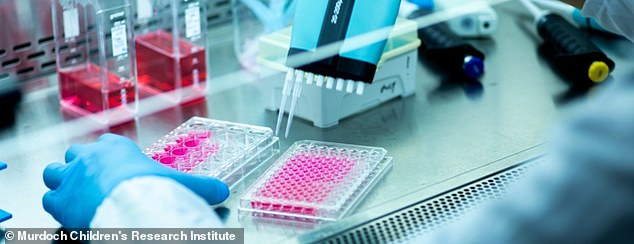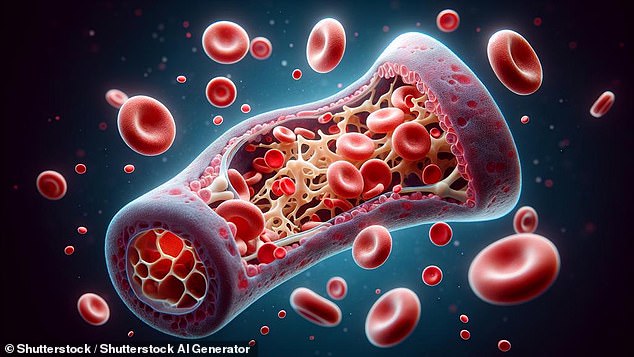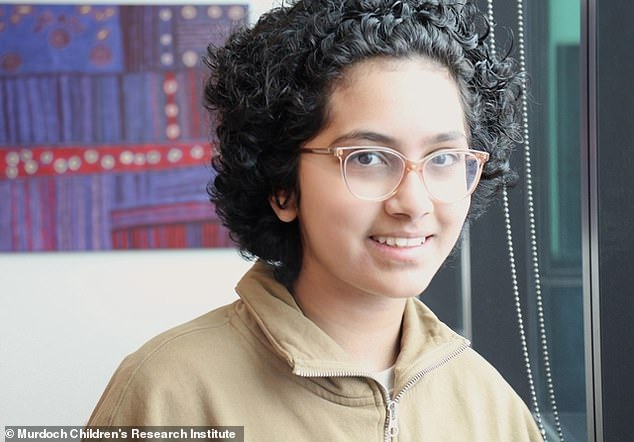Blood stem cells are grown in a LAB for the first time – a major breakthrough that could end the need for bone marrow donors
- Scientists create lab-grown blood stem cells that resemble human ones
- Discovery raises hope for new treatment options for people with leukemia
Scientists have succeeded for the first time in growing blood stem cells in a laboratory.
Stem cells can develop into any type of cell in the body, but until now, lab-grown cells have not been successfully transplanted into mice.
Now, a team from the Murdoch Children’s Research Institute has created lab-grown blood stem cells that mimic human ones, and shown they can survive longer than a petri dish.
ClAccording to the researchers, it will take about five years before the first clinical trials in humans take place.
However, the discovery has also raised hopes that treatment options could be improved for people with leukemia, serious blood diseases and children with tumors who require heavy chemotherapy.
A team from the Murdoch Children’s Research Institute has created lab-grown blood stem cells that mimic human ones and appear to outlive a petri dish.

Stem cells can develop into any type of cell in the body, but so far no lab-grown cells have been successfully transplanted into mice.
The findings, published in Nature Biotechnology, could eventually benefit patients like Riya Mahajan, who was diagnosed with the life-threatening blood disease aplastic anemia at age 11.
She was given blood transfusions every few days during a worldwide search for a suitable bone marrow donor, but none could be found, so her mother, who only partially met her criteria, took over.
The girl suffered complications after the surgery and had to remain in hospital isolation for three months while taking immunosuppressive drugs.
“The chemotherapy was probably the most difficult time for us as a family because she lost her hair during chemotherapy,” said Riya’s father Gaurav.
‘She was fed through a nasal tube and lost a lot of weight, I think about 10 kilos. In addition, the isolation can also have a mental impact.’
The transplant was ultimately successful and her father hopes this discovery will prevent other children from having to go through the same thing.
“The hardest part is seeing your child in so much pain,” he said.
‘This new research will make a major contribution to helping children suffering from similar conditions.’
According to associate professor Elizabeth Ng, while animal studies are “not perfect”, future treatments could involve taking a sample of a patient’s skin, blood or hair, reprogramming the cells and then putting them back into the patient.

A stem cell or bone marrow transplant replaces damaged blood cells with healthy ones. It can be used to treat conditions that affect blood cells, such as leukemia and lymphoma (artist’s impression)

The findings, published in Nature Biotechnology, could ultimately benefit patients like Riya Mahajan (pictured), who was diagnosed with the life-threatening blood disease aplastic anemia at age 11.
‘The blood stem cells that we create in the dish are a perfect match for the patient. As a result, the patient will not suffer much from the side effects that Riya, for example, experienced,’ she says.
“We hope that the treatment will be successful, that the recovery will be smooth and that the patients will be able to lead a normal life again very, very soon.”
Professor Ed Stanley did not call it a cure, but said it would be an important part of patients’ treatment and would remove the need to suppress their immune systems.
“For patients with bone marrow failure who are not responding to medical treatments, transplantation is in many ways a curative process. So it depends on what the underlying disease is,” he said.
The next step is to ensure the technology is safe and effective, and the team is already focused on cell production and clinical use.
